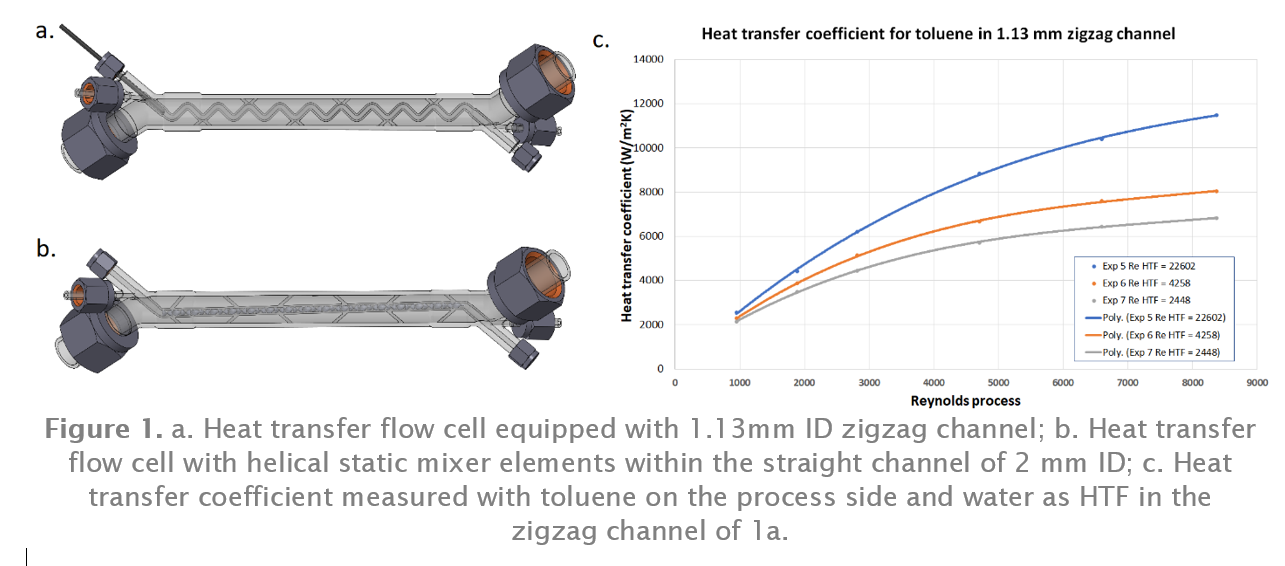Materials Science
Flow chemistry: engineering makes the difference 28th January 2019
By Lana Borukhova, Raf Reintjens and André de Vries
InnoSyn’s Lana Borukhova, Process Engineer Flow Chemistry, Raf Reintjens, Principal Scientist, and André de Vries, Commercial D
InnoSyn’s Lana Borukhova, Process Engineer Flow Chemistry, Raf Reintjens, Principal Scientist, and André de Vries, Commercial Director, share the approach of implementing 3D metal printing technology in the development of continuous processes.
When faced with a new chemical reaction to optimize, chemists will strive to develop a recipe leading to the best outcome of the reaction, whilst engineers will strive to develop a reactor for the same outcome. In reality, most of the time, chemists and engineers are trying to work within the limits of the vessel available. However, adaptation of the recipe to the equipment at hand often leads to semi-optimal results, such as the use of higher stoichiometry, longer dosing times or higher dilution. With the growing capabilities of technology, it seems counterintuitive to have such a limited flexibility.
Micro reactor technology allows greater flexibility, thanks to several differences in basic design when compared to batch technology.
- Micro- and millimeter sized channels have a higher surface-to-volume ratio than batch vessels, intensifying heat and mass transfer dramatically, and allowing highly exothermic reactions to be executed (almost) isothermally.
- Thanks to a continuous operation, the volumes of flow reactors are typically several magnitudes smaller. This allows significantly lower hold-up of hazardous and unstable reagents, next to flexibility in production volume.
- The low volume of flow reactors enables safe and cost-efficient pressurization. Toxic gases, previously avoided on large scale, can be used as reagents. Moreover, due to the absence of headspace it is often possible to dissolve the gas in the continuous liquid phase, thus removing the gas-liquid transfer barrier. Finally, increasing the pressure allows superheating of common low-boiling solvents to hasten reaction kinetics and simplify downstream processing.
- Process monitoring and control is improved with continuous processing, leading to lower levels of impurities.
The development a of a wide range of flow reactor systems from several equipment providers enabled a first proof of concept of flow processes for a variety of reactions. However, due to the fixed capabilities of installed equipment, these readily available plug-and play systems became, arguably, similar to glass flasks/batch vessels, where different chemical reactions are adapted to the particular capabilities of the flow system.
Ideally, the development and scale up of a continuous process requires a multi-disciplinary approach from the very start. To identify possible bottlenecks as well as the-most-fit-for-purpose solution, one will need to know the kinetics of the reaction, the speed of mixing required, the heat generated, and the heat transfer required to maintain isothermal conditions throughout the reactor. In other words, with sufficient data it is possible to design and manufacture the best flow reactor for any type of chemistry. Additive manufacturing (3D metal printing) enables this goal since it provides almost an unlimited freedom of design, is cost-effective, and can be quickly iterated, designed and tested again, if needed.

At InnoSyn, process development projects for a continuous production of chemicals are typically starting with a safety evaluation followed by the collection of data regarding the aforementioned reaction attributes. An exemplary tool used when it comes to the investigation of very fast and highly exothermic reactions are 3D metal printed heat transfer flow cells (Figure 1a and b). They allow the determination of the heat transfer coefficient of specific configurations (zigzag channels and static mixer type, respectively) at certain flow speeds (Reynolds numbers). Figure 1c shows the overall heat transfer coefficient for 1a, clearly demonstrating the dependence of the flow speeds of the medium in the process channel and the flow speed of the heat transfer liquid.
For downstream processing (DSP), yet another important aspect in the development of a flow process, we only continue in a continuous mode when safety, selectivity and/or cost reasons are calling for it. Very often, this entails a continuous extraction, usually after a quench of the highly reactive reagent. If favourable, and in line with the wishes of the customer, a fully continuous work up, including continuous crystallization can be developed.
To conclude, the data-driven approach and the fast iterations of the hardware, lead to the identification of constraints and requirements of a particular chemical reaction and the best fit for purpose flow reactor(s). Alternatively, with all the data collected (vide supra), and scale-up calculations, it is also possible to design ‘ready to roll in skids’ containing the 3D metal printed reactors, mixers, and heat transfer modules of interest, with incorporated supporting hardware like pumps, control units and PAT instruments.
Authors:
Dr Lana Borukhova, Process Engineer Flow Chemistry, Dr Raf Reintjens, Principal Scientist, and Dr André de Vries, Commercial Director, at Innosyn BV, Urmonderbaan 22, 6167 RD
Geleen, The Netherlands
Geleen, The Netherlands
T: +31 46 47 60 525
E: info@innosyn.com



